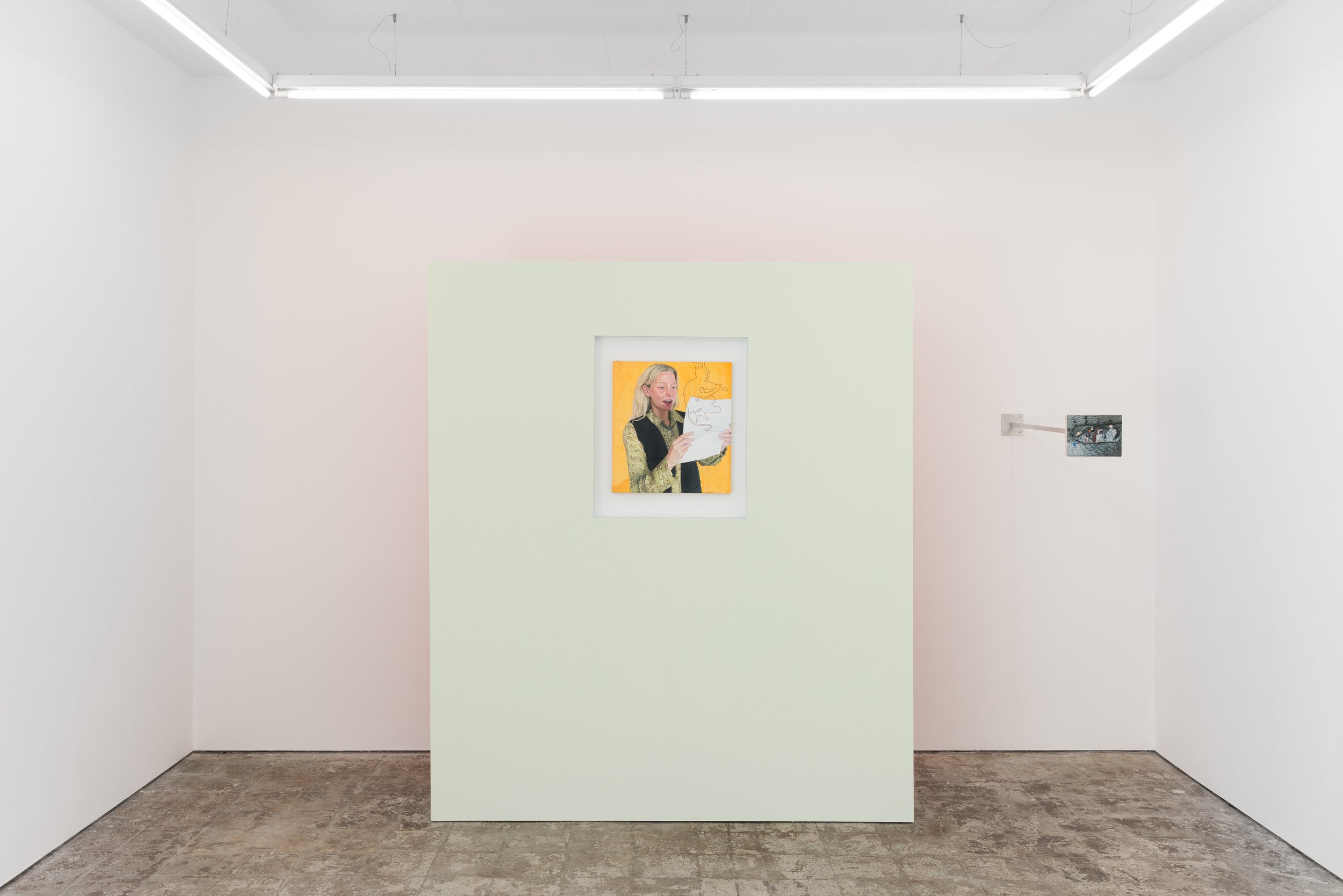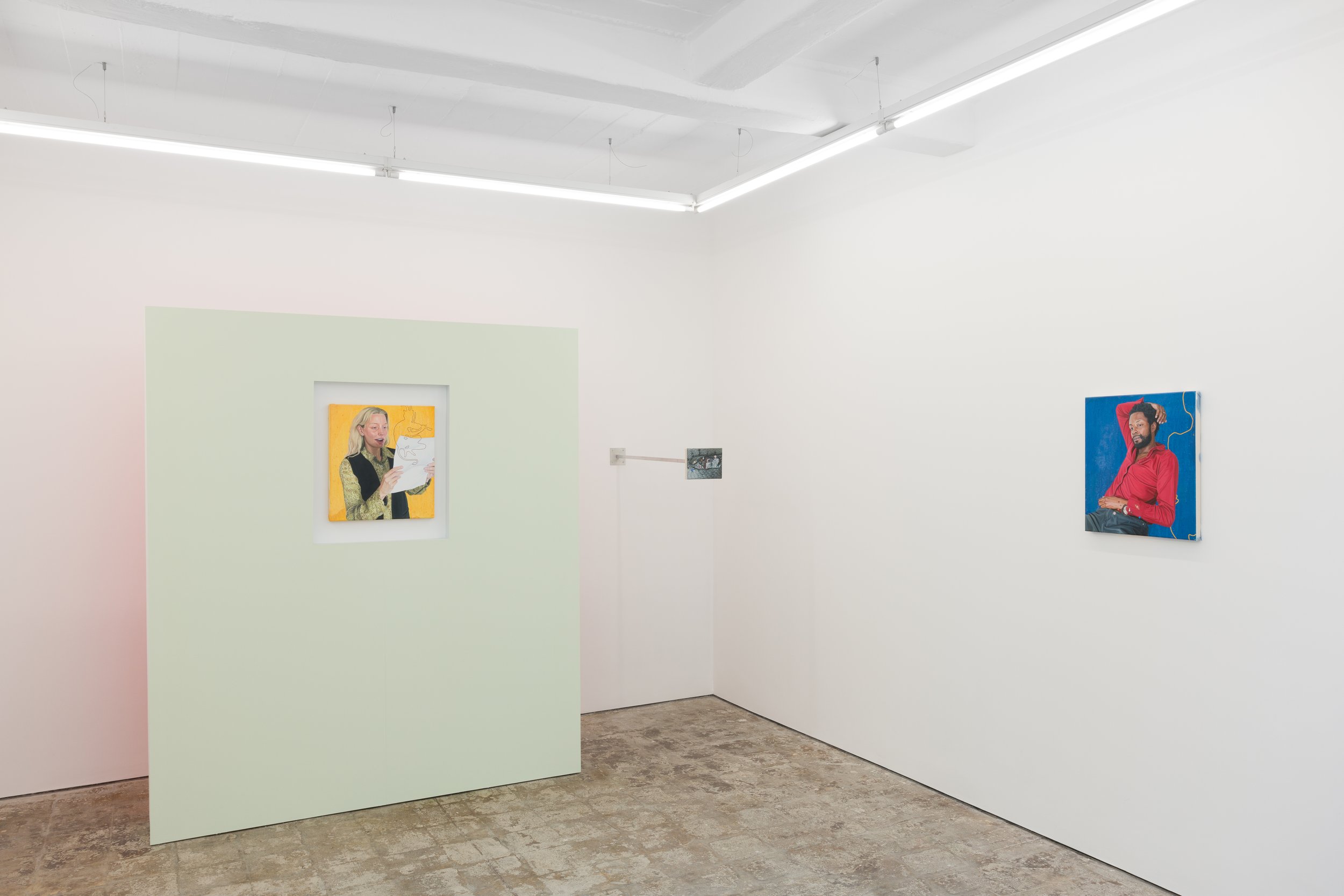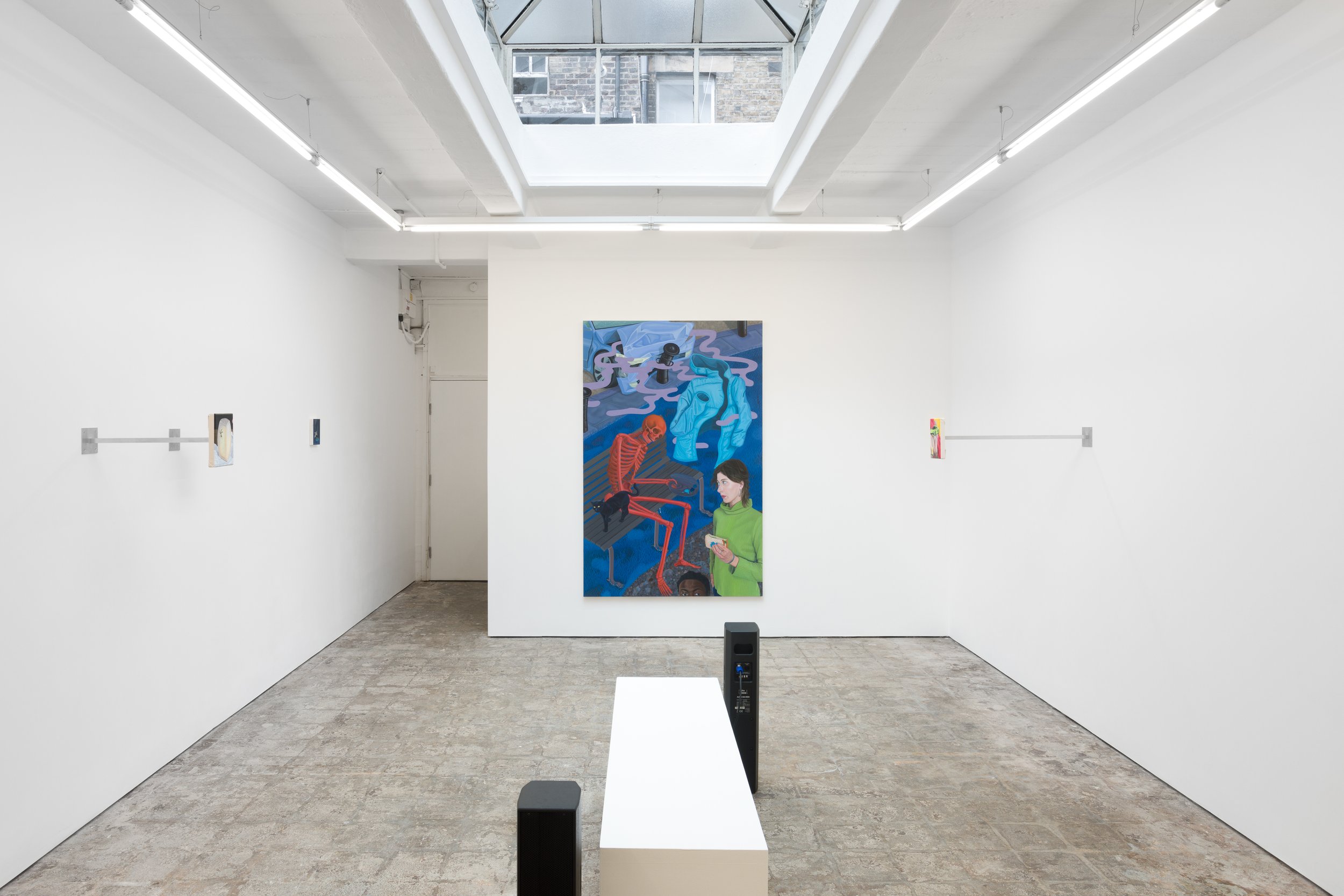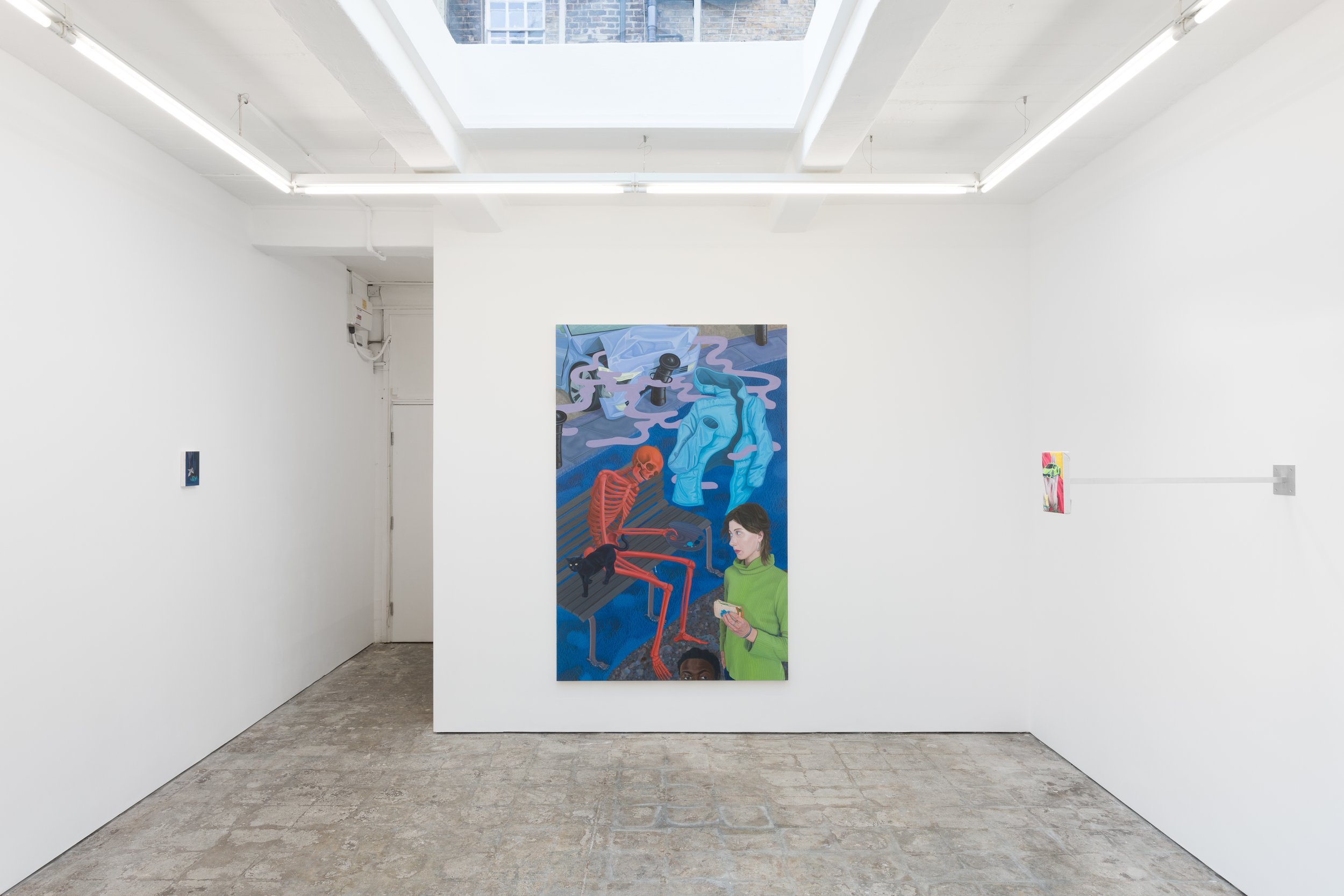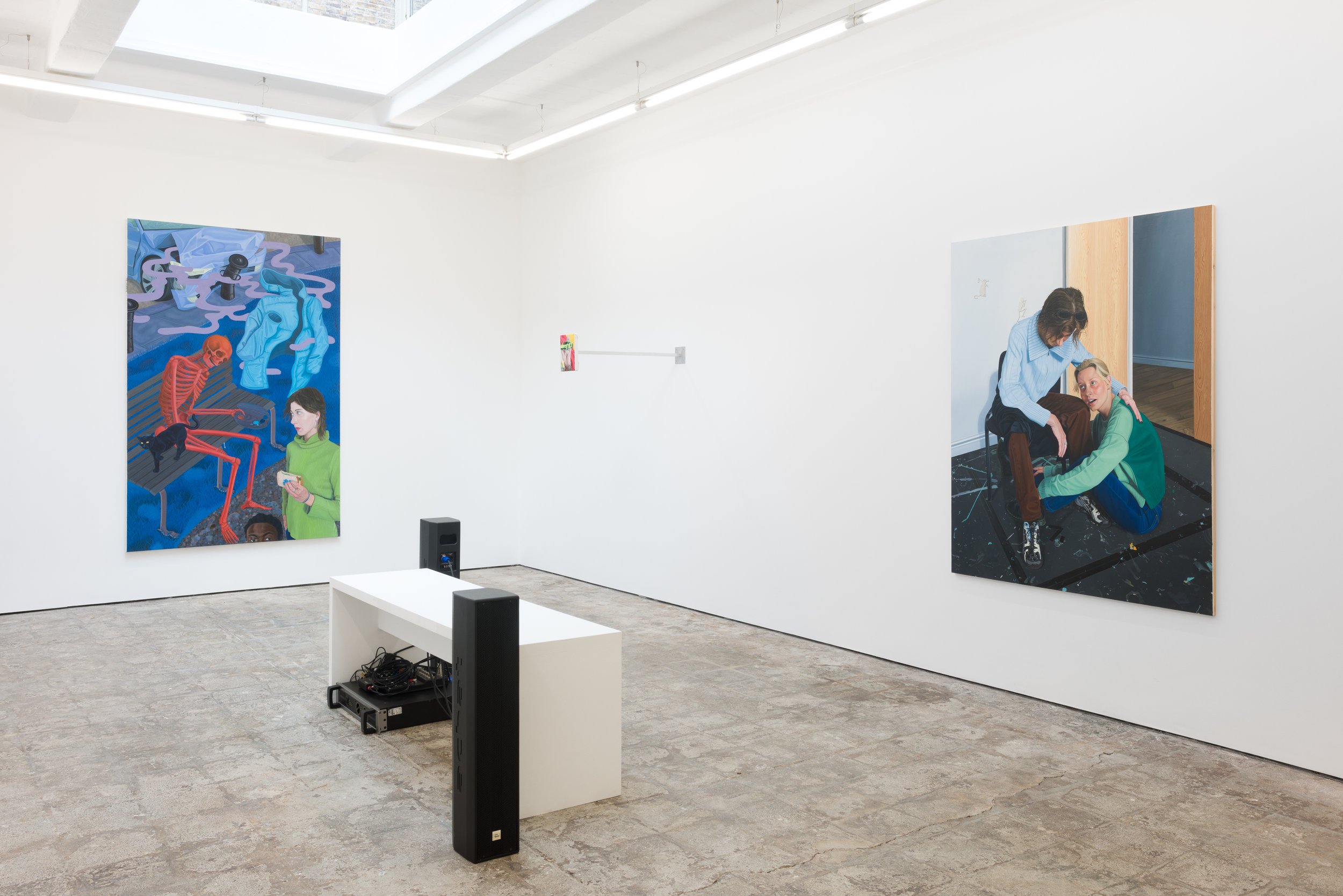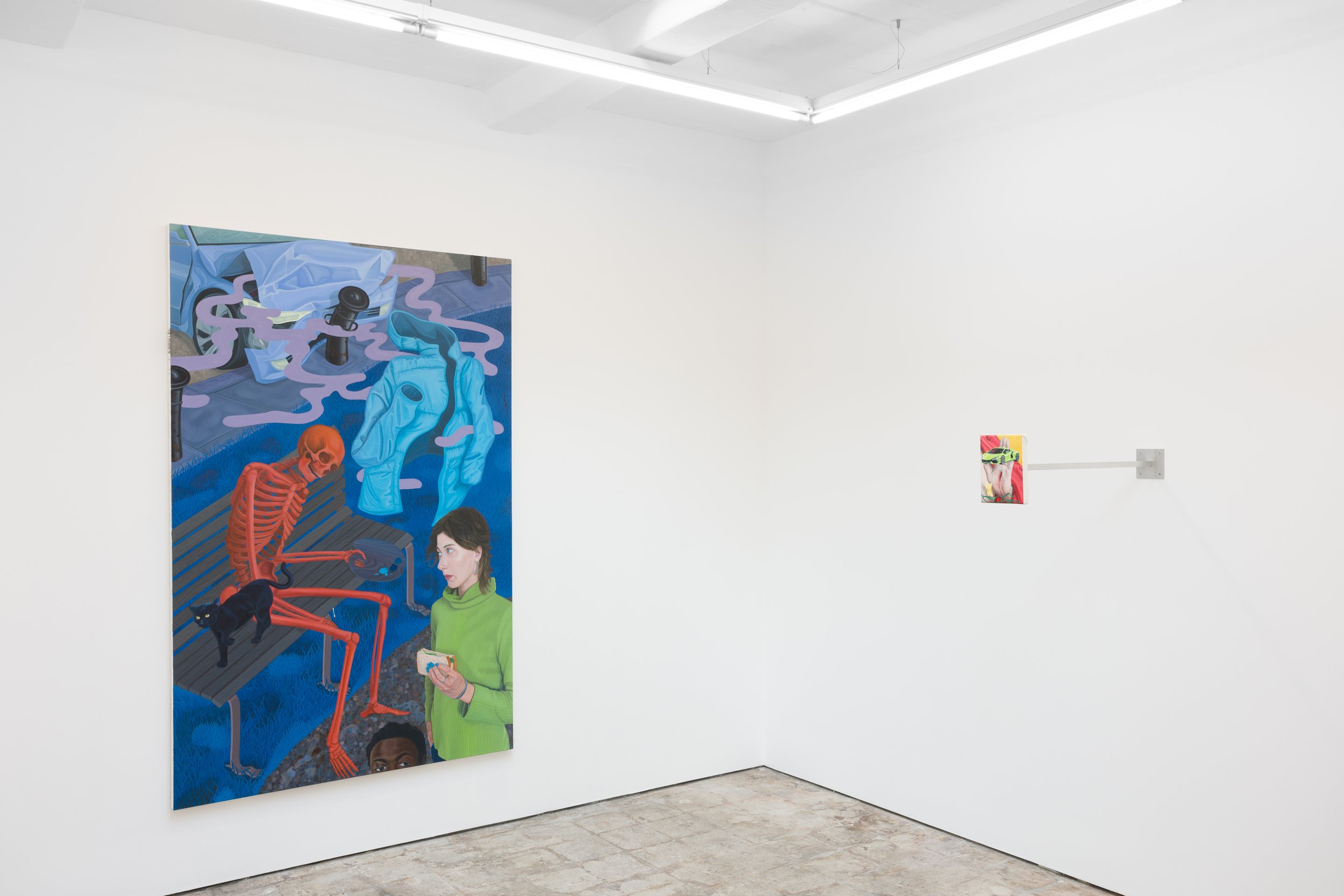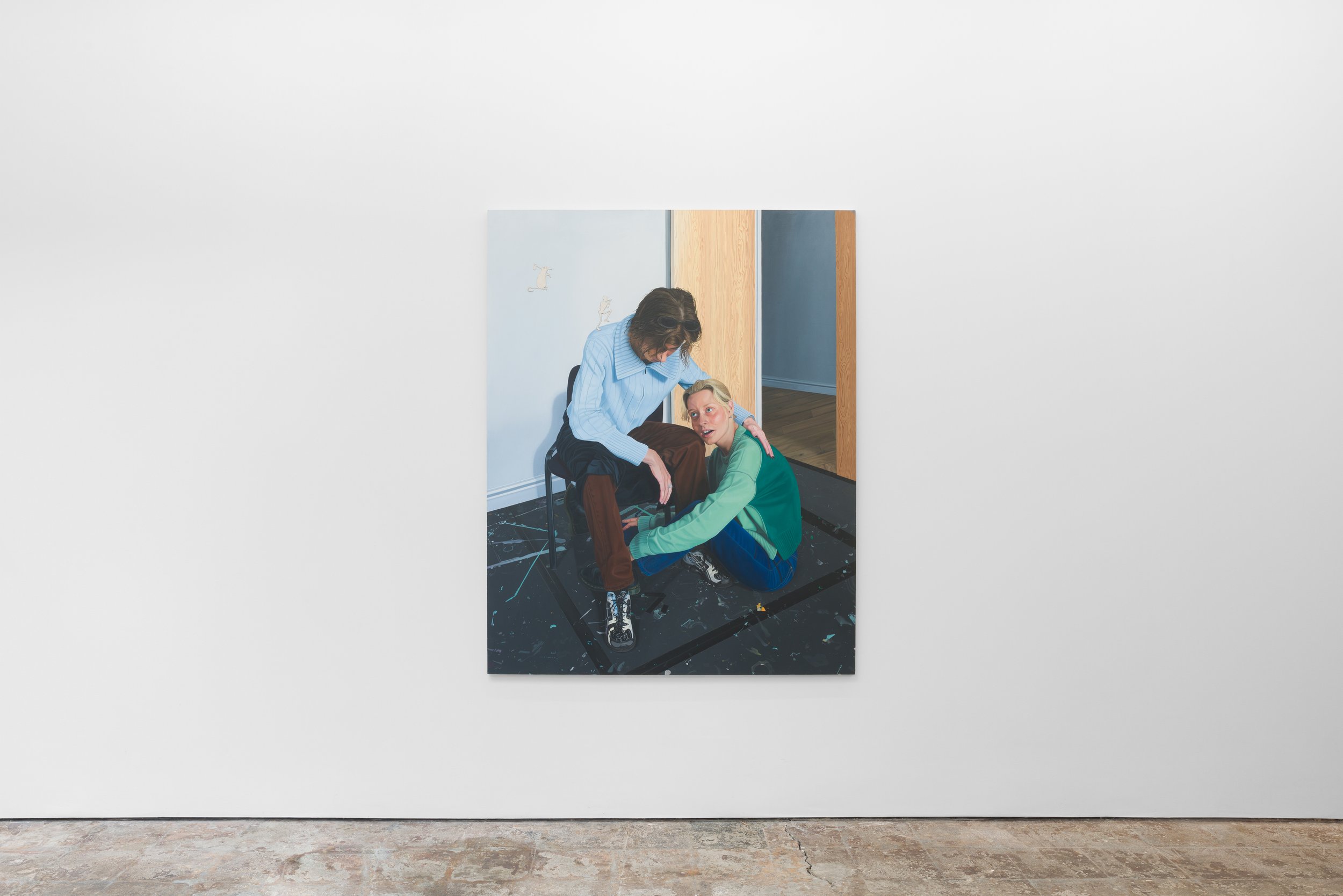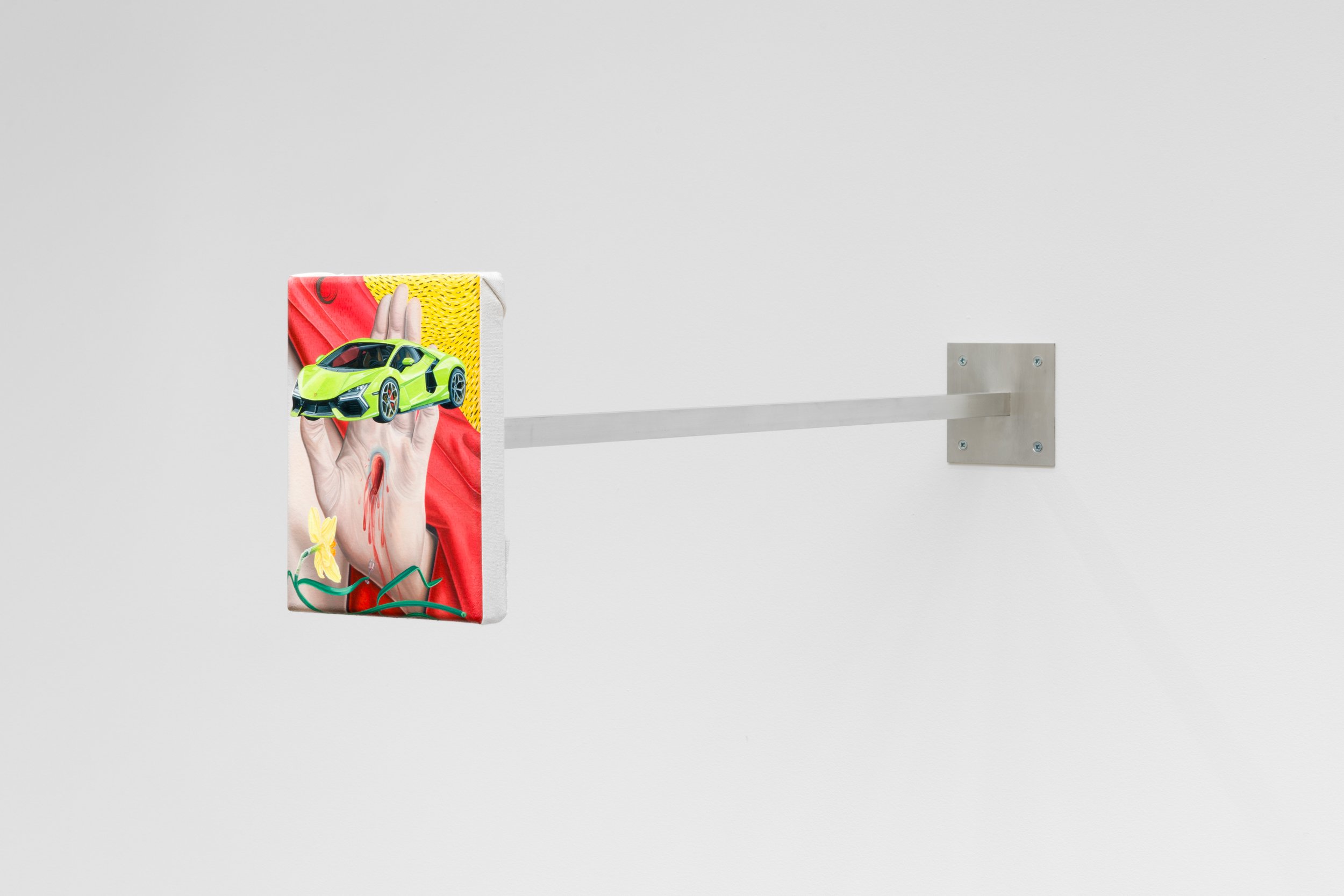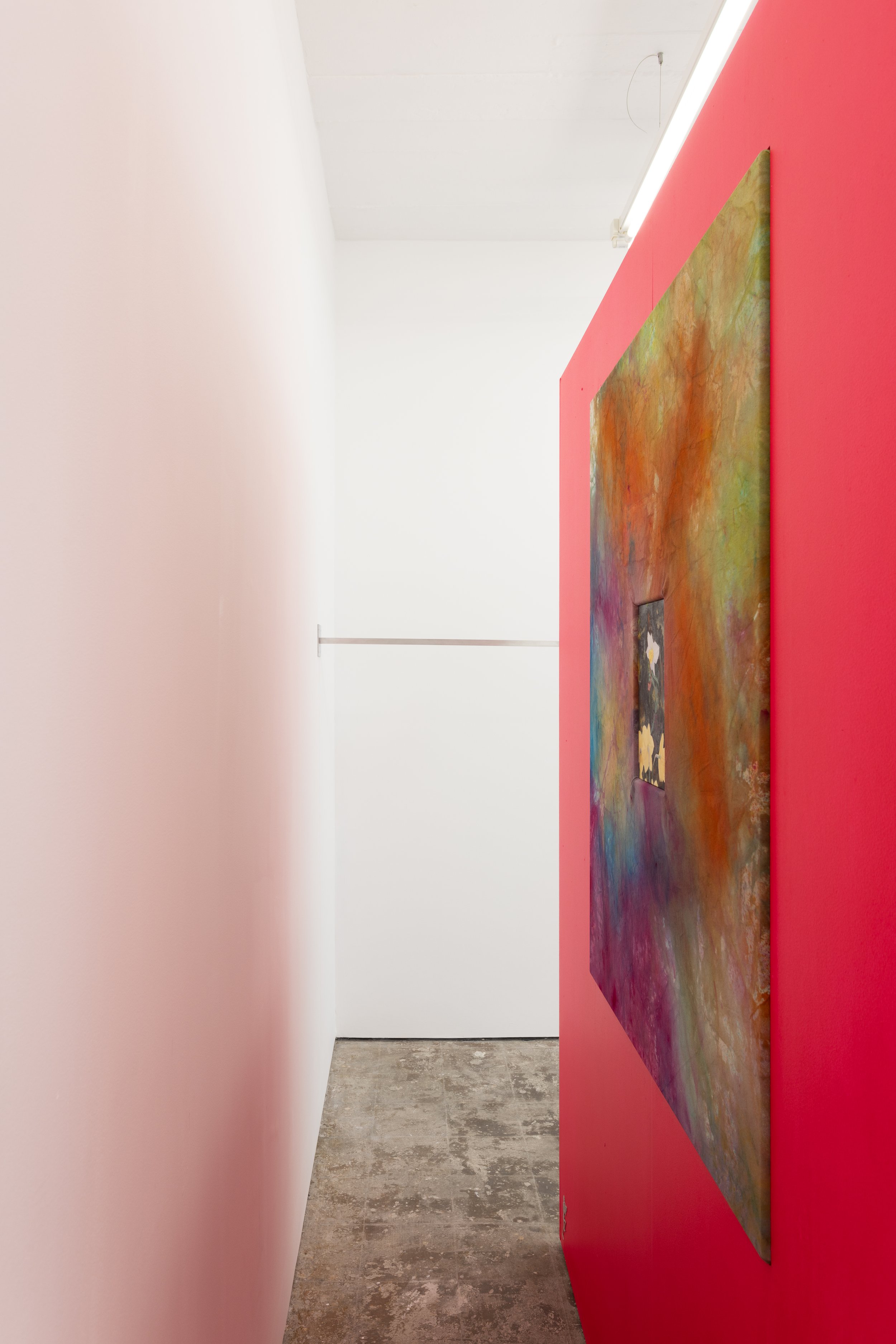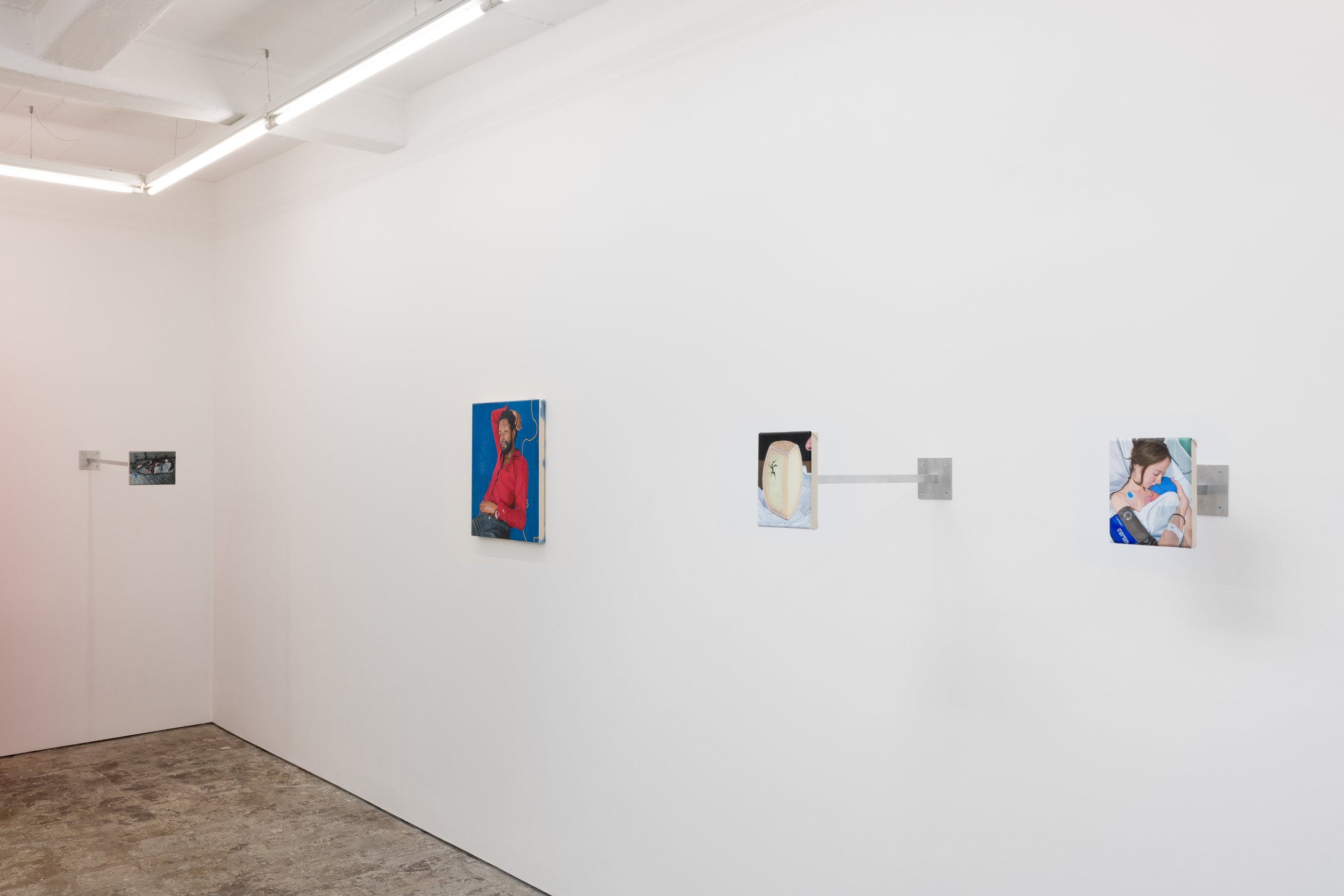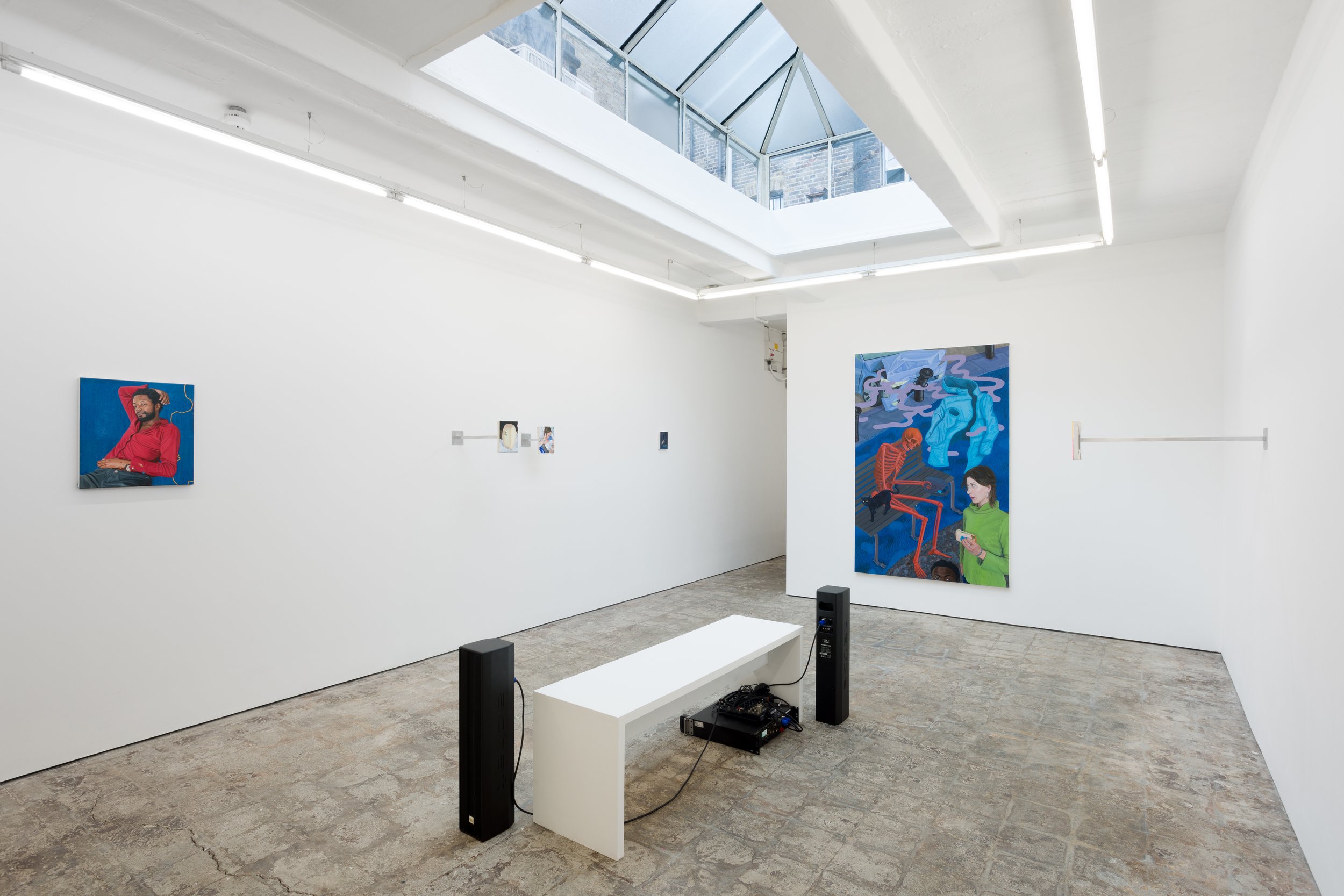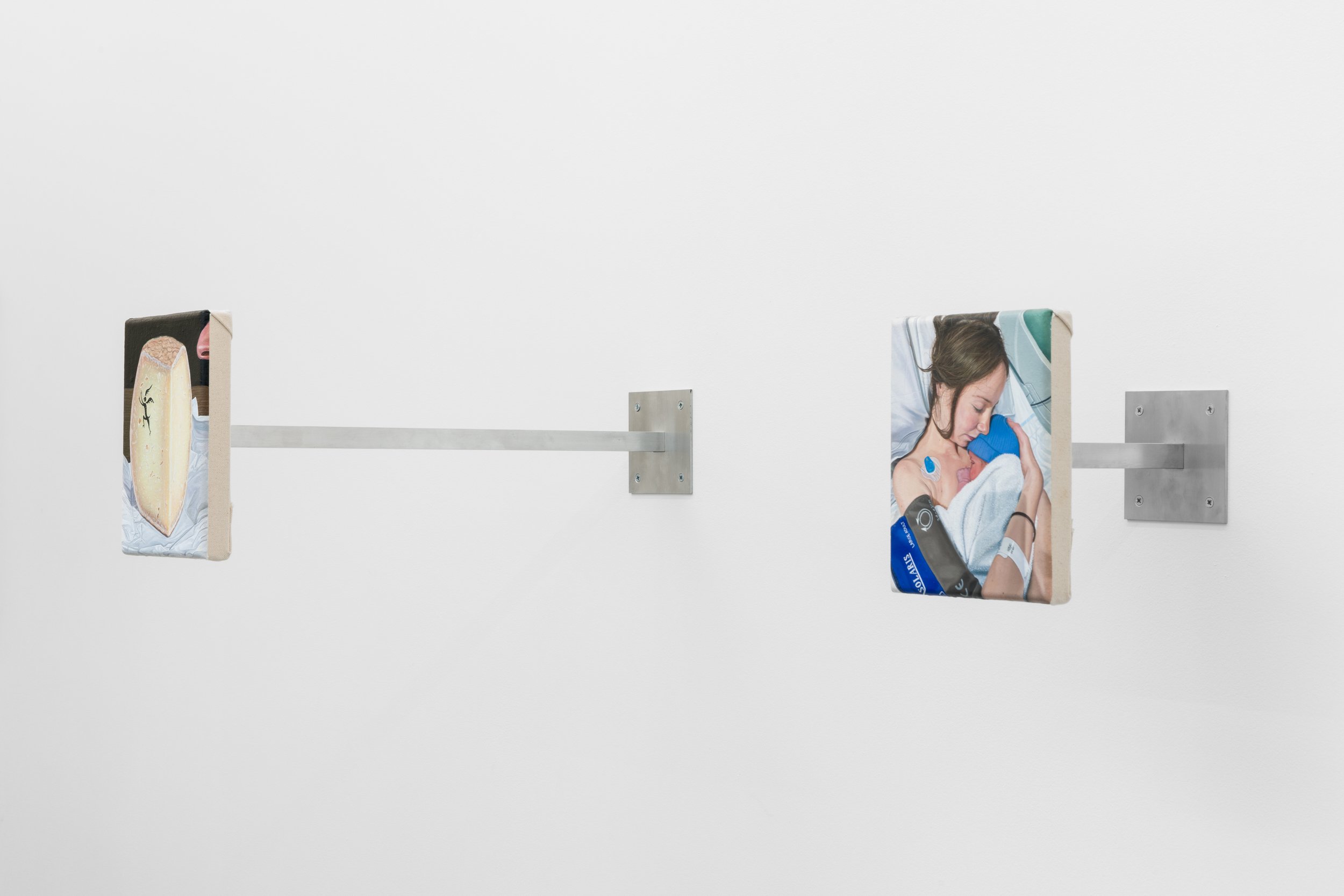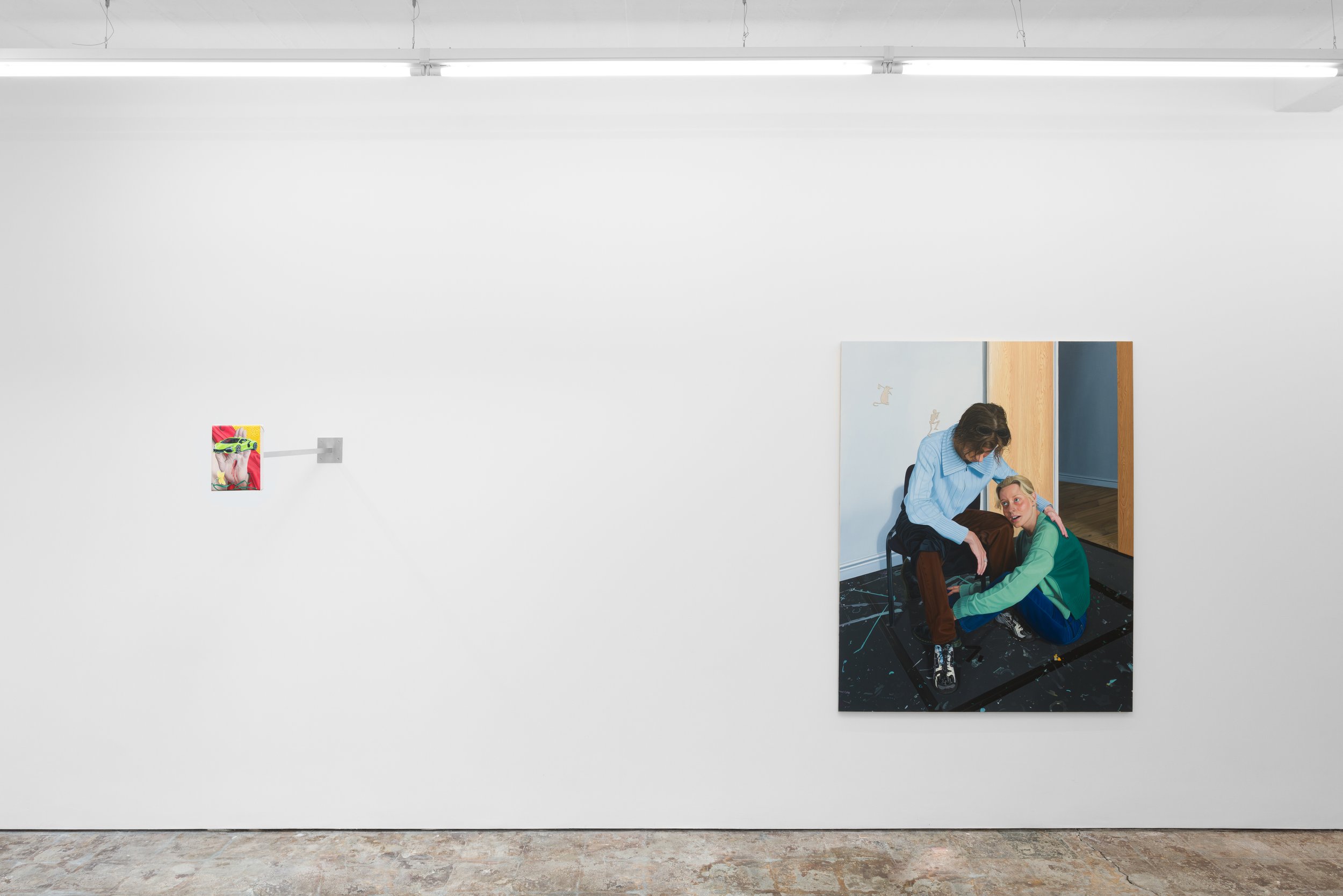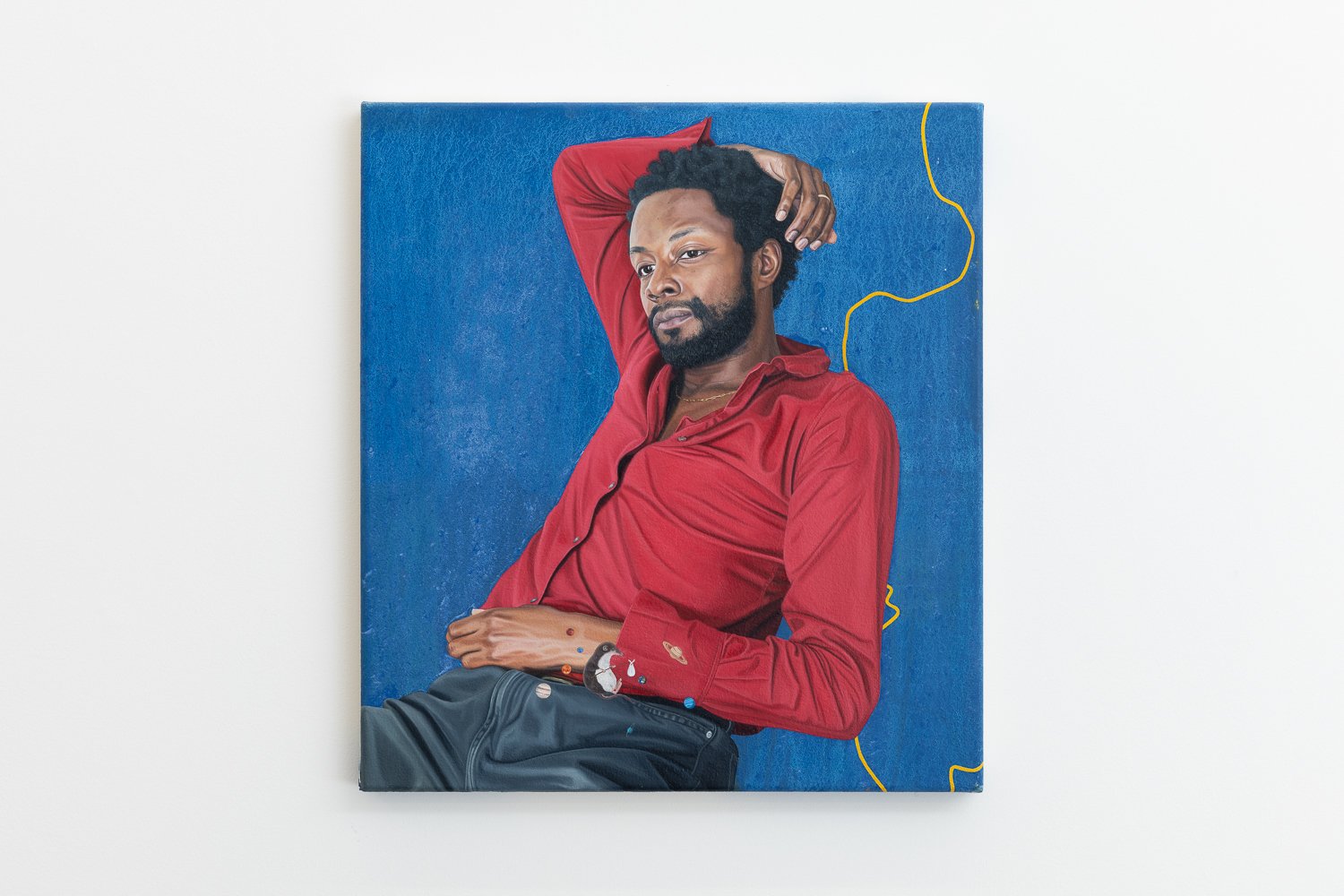ALICE BLACK is proud to present Tristan Pigott (b. 1990) ‘Instrument in a Spiral’. Pigott’s third exhibition with the gallery presents the metamorphosis of paint as analogous to the metamorphosis of perception. Utilising The Myth of the Gaze of Orpheus as a springboard, Pigott taps into the cosmic dramaturgy of art history - one freed of concern for singular or decipherable meaning.
With pigment on canvas and board lured from the walls as if responding to the sound piece serenading them, this suite of new works by Pigott introduces a sonic force to the artist’s sustained interest in challenging stasis in painting. Rather than activating a discernible narrative, molecules of paint transmute the transgressive gaze itself. At Pigott’s hand, the conflation of stimuli slips from the work and alights on the retina, vibrating with the composite frequencies of Nathan Pigott’s site specific sound scape.
Tristan Pigott ‘Instrument in a Spiral’
By Dooyong Ro
Tristan Pigott’s ‘Instrument in a Spiral’ explores the existence and operations of painting through, for the first time, the introduction of the medium of music. With its starting point in a mythical narrative, and by bonding the unique visual indicators revealed in the paintings with the auditory unit of music that fills the surroundings, the exhibition creates a multi-layered synesthetic experience that actively exists inside the space.
Painting and music, these two have in common that they are the most intuitive, and at times metaphorical channels through which we understand the world. In ‘Instrument in a Spiral’ each stanza of the music seems to have a storyline that embraces a painting. With the sound echoing through the speaker and the allegories emanating from the paintings, both densely packed, become a thin line. The music, pushed by the vibration from the subwoofer and transmitted through the air, is an arbitrator that mediates the various allegories that are flatly melted into the painted works, acting as a fluid frame. In direct response the painted images emitted from the canvas absorb the music, as do our eyes and ears with us becoming the third instrument in the audio-visual orchestra. These elements intertwine spirally with one another to create one unified stem, a gigantic and elastic thread. The moment the music is stopped, so too the dynamically moving time is stopped for a moment, arranging the traces of notes that flowed in a spiral along the auricle for this pause. The space for contemplation that occurs when the music ceases create an opportunity for various elements which have been floating to find their way back.
The music starts flowing again. The sound created by tightening and loosening an instrument’s strings awakens our subtle and delicate senses, as if moving back and forth through various emotional lines. The gradually escalating development of the music resembles the dramatic arc of Orpheus reaching Hades with his lyre to find Eurydice, breaking through barriers and emerging from the underworld. The chaos that disappears after the irregularly swirling melody penetrates the life of Orpheus, which ends with losing Eurydice right before reaching the living world. In the end, Orpheus's story, which exists in a spiral, converges to a single point; a full stop. It has become a synesthetic imagery which exists somewhere far away; a myth that transcends reality. Just as the narrative of mythology has been handed down orally through the ages with the same skeleton and changed skin, Pigott borrows allegories to reveal the variable narrative of storytelling and the fluid nature of painting, which like music, may be seen as 'flowing’.
As we stand here, does the space behind the wall glowing in a soft pink symbolise the exit to the living world that Orpheus and Eurydice were gazing? While imagining the scene where Orpheus had his last conversation with Eurydice and retracing the auditory clues of the allegory from Pigott’s paintings, we might experience the new and unfamiliar meanings which arise from the serenity we are left with once the vibrations of afterimages in our mind’s eye diminish.
Tristan Pigott | Biography
Tristan Pigott (b. 1990) lives and works in London, UK. Pigott holds a BA from Camberwell College of Arts (2009-2012) and an MA in Sculpture from the Royal College of Art (2017-2019). Pigott’s practice is an integrated synthesis of painting, sculpture and installation through which he explores the hybrid nature of perception. Mining art history and overlaying it with references from popular culture and the internet, Pigott traces the visual lineage that has brought us to where we are now. Pigott’s paintings are very deliberate and specific combinations of visual reference and inferred meaning. Primarily working with figure studies and Vanitas inspired still-life which include decisive arrangements of people, objects or furnishings, Pigott is careful to include only those things which speak of the contemporary themes he wishes to address. You are as likely to find a reference to a work found in a national museum, as you are a reference to a fashion mag, John Wayne cowboy film, google maps, drones and satellites. Through physical disruptors, Pigott removes painting from its usual safe wall-based mount to attest that the medium enters its own dimensional realm, when viewed in the context of active display.
Nathan Pigott | Biography
Nathan Pigott (b. 1992) is a saxophonist and composer who takes inspiration from avant-garde jazz, free improvisation, minimalism and folk music from across the world. In his creative practice he juxtaposes composed material with elements of improvisation with the intention of creating a dynamic and diverse sonic world. Pigott performs regularly with various groups in London and around the UK and Europe.
Notes to Editors:
Press & sales enquiries: Alice Black | alice@aliceblackart.com | +44 (0)7743488626
Address: ALICE BLACK, 7 Windmill Street, London W1T 2JD
Opening Hours: Wednesday to Saturday 11am-6pm

